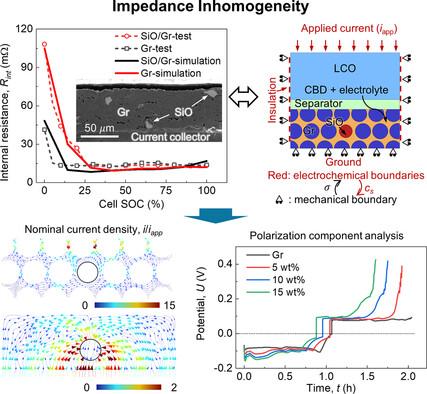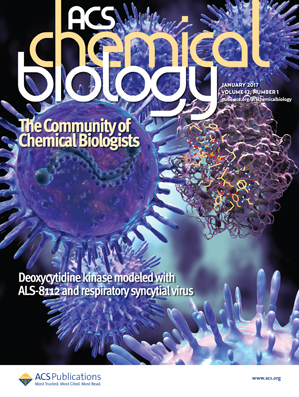Impedance Inhomogeneity in SiO/Gr Composite Anode
IF 3.5
2区 生物学
Q2 BIOCHEMISTRY & MOLECULAR BIOLOGY
引用次数: 0
Abstract
Silicon/carbon (Si/C) composite anode materials have emerged as promising candidates for high‐energy‐density lithium‐ion batteries (LIBs), boasting advantages such as high capacity, cost‐effectiveness, and abundance. However, the integration of Si‐based materials into conventional graphite anodes introduces heterogeneous interactions between electrochemical and mechanical behaviors, owing to substantial volume changes and chemical potential variations. One significant consequence of these interactions is the impedance inhomogeneity, which adversely affects the discharging capacity of Si‐based LIBs. In an effort to comprehensively understand this phenomenon and its underlying mechanisms, an electrochemo‐mechanical‐coupled model is established, incorporating detailed particle geometries on the anode side. The model is employed to investigate polarization components and their evolution during the charging/discharging process. Various influencing factors, such as SiO weight percentage (wt%), electrode thickness, and SiO distributions (both in terms of distribution uniformity and direction), are systematically discussed. In this study, an efficient computational approach is offered to analyze battery polarizations, deepening the understanding of the inhomogeneous evolution of these polarizations in Si/C composite anodes. Ultimately, these insights guide the design of anodes for next‐generation high‐energy‐density LIBs.

SiO/Gr 复合阳极中的阻抗不均匀性
硅/碳(Si/C)复合负极材料已成为高能量密度锂离子电池(LIBs)的理想候选材料,具有容量大、成本效益高和丰富等优点。然而,由于大量的体积变化和化学势变化,将硅基材料集成到传统石墨负极中会在电化学行为和机械行为之间引入异质相互作用。这些相互作用的一个重要后果是阻抗不均匀性,它对硅基 LIB 的放电能力产生了不利影响。为了全面了解这一现象及其内在机理,我们建立了一个电化学-机械耦合模型,其中包含阳极侧的详细颗粒几何形状。该模型用于研究充电/放电过程中的极化成分及其演变。系统地讨论了各种影响因素,如氧化硅重量百分比(wt%)、电极厚度和氧化硅分布(分布均匀性和方向)。本研究提供了一种分析电池极化的高效计算方法,加深了对 Si/C 复合阳极中极化不均匀演变的理解。最终,这些见解将指导下一代高能量密度锂电池阳极的设计。
本文章由计算机程序翻译,如有差异,请以英文原文为准。
求助全文
约1分钟内获得全文
求助全文
来源期刊

ACS Chemical Biology
生物-生化与分子生物学
CiteScore
7.50
自引率
5.00%
发文量
353
审稿时长
3.3 months
期刊介绍:
ACS Chemical Biology provides an international forum for the rapid communication of research that broadly embraces the interface between chemistry and biology.
The journal also serves as a forum to facilitate the communication between biologists and chemists that will translate into new research opportunities and discoveries. Results will be published in which molecular reasoning has been used to probe questions through in vitro investigations, cell biological methods, or organismic studies.
We welcome mechanistic studies on proteins, nucleic acids, sugars, lipids, and nonbiological polymers. The journal serves a large scientific community, exploring cellular function from both chemical and biological perspectives. It is understood that submitted work is based upon original results and has not been published previously.
 求助内容:
求助内容: 应助结果提醒方式:
应助结果提醒方式:


